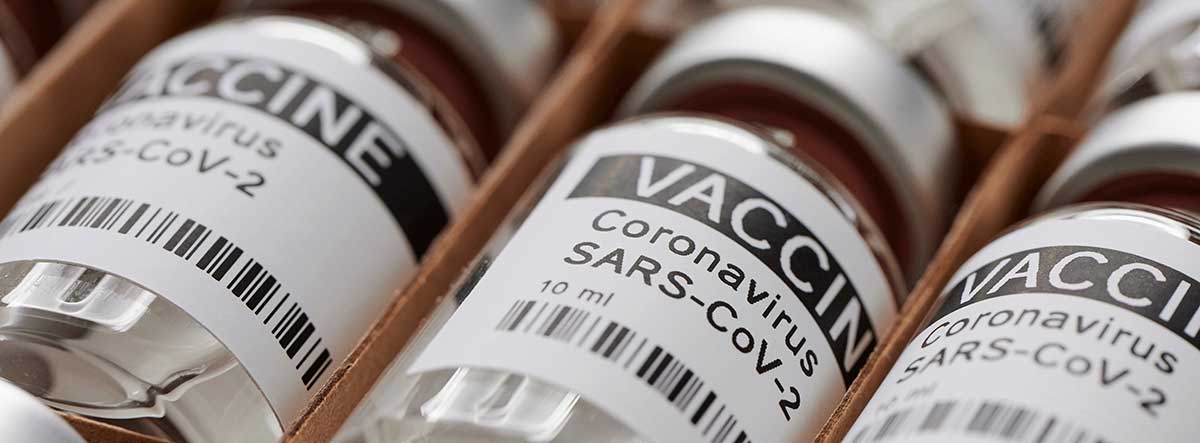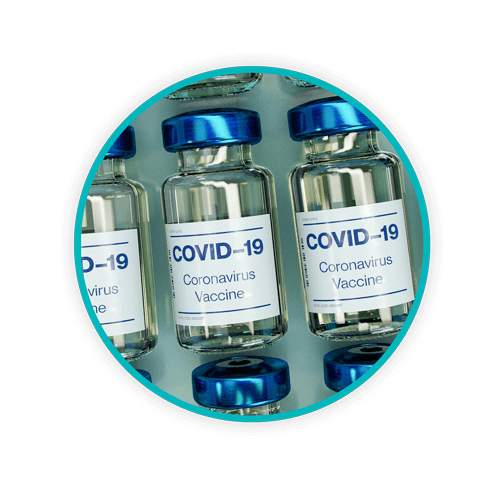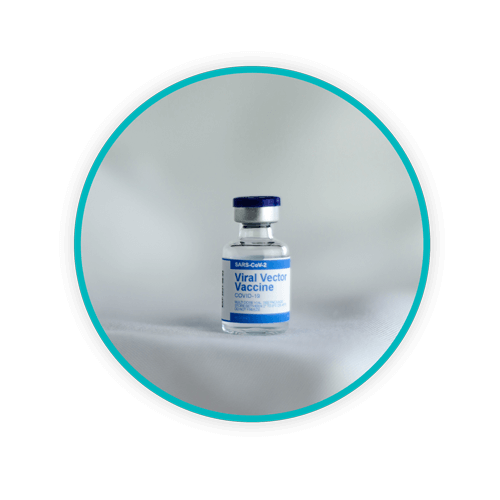COVID-19 Vaccine Waste Disposal Guidelines

The question of proper disposal of COVID-19 related vaccine vials, syringes, and other equipment associated with use, handling, and packaging throughout the UK requires knowledge and preparation. Compliance is key to protecting not only healthcare providers involved in administering the vaccine but to the general public as well as the environment.
Sharpsmart has put together a brief tip sheet for our clients, along with a number of resources for proper and safe disposal of COVID-19 related vaccine vials and paraphernalia. We provide support in offering the latest guidance when it comes to proper disposal of vials, syringes, and personal protective equipment (PPE), as well as safety tips for handling and disposing of dry ice in which vaccines are packed.
Talk to an expert about COVID-19 guidelines
TOPICS WE WILL COVER:
1 / COVID-19 Vaccine Waste Guidelines
2 / COVID-19 Vaccine Disposal Guidelines
3 / Dry Ice Disposal Guidelines
COVID-19 Vaccine Waste Guidelines

Firstly, because the COVID-19 vaccines do not contain any viral or infectious components, the COVID-19 vaccines from all manufacturers are classified as a non-hazardous waste. According to the National Health Service (NHS) categories for various items utilised in vaccine delivery scenarios differ. For example, protective personal equipment (PPE) used in treatment is considered an offensive waste and should be treated accordingly.
Vaccinations given at mass vaccination sites are deemed a non-hazardous waste and may be removed with duty of care note and without a consignment note.[1] COVID-19 management of vaccine waste implies that proper steps have been taken to store vaccine waste securely on-site and that it is safely and securely removed off-site as well. Appropriate processes must be in place to ensure that vaccine disposal, as well as vaccine site consumables are safely and properly segregated for disposal.
COVID-19 sharps waste should always be disposed of in a compliant sharps container. Even though such waste is considered non-hazardous, it must nevertheless be disposed of in a hazardous or clinical waste incinerator, or transported to an appropriately permitted waste disposal facility.
Mass vaccination sites must also store outer and/or secondary packaging in secure containers that can be shredded on-site. If such facilities are not available, off-site shredding can be consigned to a registered and confidential waste contractor. According to the NHS, a certificate of destruction must be supplied at a minimum of once monthly.
Per the NHS, COVID-19 vaccine vials are treated as medicinal waste and are to be disposed of in approved rigid and/or reusable containers. Sharps are to be disposed of in approved sharps boxes at mass vaccination sites. If the COVID-19 vials are accessible at a mass vaccination site or other site where the general public may be present, the COVID-19 vials are to be placed in yellow sharps bins.

Disposal of Unused or Expired COVID-19 Vaccines
Damaged, expired, or unused vials of COVID-19 vaccines are to be disposed of in a sharps box[2] and per the regulations of your local waste management policies. Outer carton or packaging labels must be covered or defaced with black marker and disposed of as a confidential waste stream. Packaging must be stored in a secure container and may also be transported off-site for shredding.
Handling and Disposal of Dry Ice
Standard operating procedures for dry ice must be followed to prevent injury. Dry ice is a form of frozen carbon dioxide. It doesn’t melt, but sublimates, which means that it transforms from a solid to gas form without turning into liquid first. It is extremely cold (-79°C). As it transforms, carbon dioxide vapour replaces oxygen in the air. In a closed or inadequately ventilated area, this may cause asphyxiation, as the carbon dioxide will deplete oxygen in the air.
Because of its low temperature, even brief contact with bare skin can cause frostbite or cold burns. Always wear thermally insulated gloves and protective eyewear (preferably with a face shield) when unpacking containers of vaccine packed in dry ice for shipment.
Be aware that dry ice is twice as heavy as ‘regular’ ice and must be stored in a well-ventilated room. Dry ice can be stored in a ventilated cooler (such as Styrofoam), but not in tightly sealed containers. As dry ice sublimates and becomes gaseous, it expands and may explode if not properly ventilated.
Never dispose of leftover dry ice in sink drains or toilets or in a waste bin.
Safety First
All healthcare personnel involved in providing COVID-19 vaccines must be diligent on proper, safe, and compliant waste disposal practices. To better facilitate your processes, contact your local health departments and COVID-19 vaccine manufacturers for specific information on disposing of unused, unopened, expired, or potentially contaminated vaccine supplies. For additional guidance about how to deal with and safely dispose of your COVID-19 vaccine sharps, vials, or clinical waste, reach out to one of our experts.
